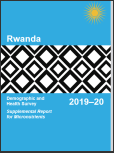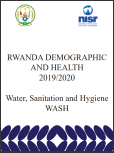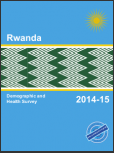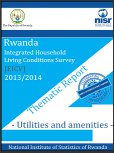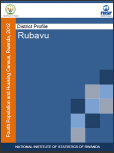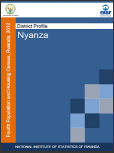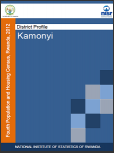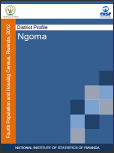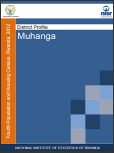Rwanda Demographic and Health Survey 2019-20 - Supplemental Report for Micronutrients
The primary objective of the 2019–20 RDHS is to provide up-to-date estimates of basic demographic and health indicators, including estimates of micronutrient indicators. As part of the survey, blood samples were collected to measure biomarkers of inflammation, anemia, iron, vitamin A, and vitamin B12 status in children age 6–59 months and in women age 15–49. In addition, women were tested for folate (blood sample) and iodine status (urine sample). Anthropometry and malaria infection data were also collected for children age 6–59 months and women age 15–49.
RWANDA DEMOGRAPHIC AND HEALTH SURVEY :Water, Sanitation and Hygiene (2019/2020)
This report defines and computes indexes of progress in water provision, sanitation services, and hygiene for Rwanda, as well as an overall WASH index. The raw data come from DHS, EICV, and MIS surveys, from 2010 through 2020.
Demographic and Health Survey 2014/2015 - Final report
The main objective of the 2014-15 RDHS was to obtain current information on demographic and health indicators, including family planning; maternal mortality; infant and child mortality; nutrition status of mothers and children; prenatal care, delivery, and postnatal care; childhood diseases; and pediatric immunization.
EICV 4 THEMATIC REPORT - Utilities and amenities
The six thematic reports in this series are: (i) Economic Activity; (ii) Utilities and Amenities (water/sanitation/energy/housing/transport/ICT); (iii) Environment and Natural Resources; (iv) Gender; (v) Youth; (vi) Education.
PHC 2012- DISTRICT PROFILE- Rubavu
Policy development and measurement of progress in implementing various national and international development programs at the sub-national level, calls for the availability of demographic and socio-economic data also disaggregated at the level below national, to inform concentrated planning and decision making.
PHC 2012- DISTRICT PROFILE- Huye
Policy development and measurement of progress in implementing various national and international development programs at the sub-national level, calls for the availability of demographic and socio-economic data also disaggregated at the level below national, to inform concentrated planning and decision making.
PHC 2012- DISTRICT PROFILE- Nyanza
Policy development and measurement of progress in implementing various national and international development programs at the sub-national level, calls for the availability of demographic and socio-economic data also disaggregated at the level below national, to inform concentrated planning and decision making.
PHC 2012- DISTRICT PROFILE- Kamonyi
Policy development and measurement of progress in implementing various national and international development programs at the sub-national level, calls for the availability of demographic and socio-economic data also disaggregated at the level below national, to inform concentrated planning and decision making.
PHC 2012- DISTRICT PROFILE- Ngoma
Policy development and measurement of progress in implementing various national and international development programs at the sub-national level, calls for the availability of demographic and socio-economic data also disaggregated at the level below national, to inform concentrated planning and decision making.
PHC 2012- DISTRICT PROFILE- Muhanga
Policy development and measurement of progress in implementing various national and international development programs at the sub-national level, calls for the availability of demographic and socio-economic data also disaggregated at the level below national, to inform concentrated planning and decision making.

